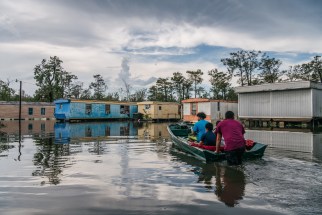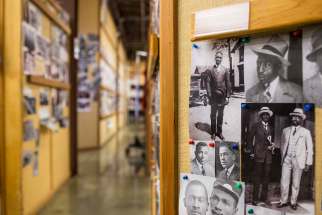Making a present of the past Set of CBC's The Porter a testament to the special connection production has with Winnipeg's Black history
Read this article for free:
or
Already have an account? Log in here »
To continue reading, please subscribe:
Monthly Digital Subscription
$0 for the first 4 weeks*
- Enjoy unlimited reading on winnipegfreepress.com
- Read the E-Edition, our digital replica newspaper
- Access News Break, our award-winning app
- Play interactive puzzles
*No charge for 4 weeks then price increases to the regular rate of $19.00 plus GST every four weeks. Offer available to new and qualified returning subscribers only. Cancel any time.
Monthly Digital Subscription
$4.75/week*
- Enjoy unlimited reading on winnipegfreepress.com
- Read the E-Edition, our digital replica newspaper
- Access News Break, our award-winning app
- Play interactive puzzles
*Billed as $19 plus GST every four weeks. Cancel any time.
To continue reading, please subscribe:
Add Free Press access to your Brandon Sun subscription for only an additional
$1 for the first 4 weeks*
*Your next subscription payment will increase by $1.00 and you will be charged $16.99 plus GST for four weeks. After four weeks, your payment will increase to $23.99 plus GST every four weeks.
Read unlimited articles for free today:
or
Already have an account? Log in here »
Hey there, time traveller!
This article was published 01/09/2021 (1560 days ago), so information in it may no longer be current.
On a rainy Friday evening in Winnipeg’s landmark Nutty Club building, camera crews, grips, food services, hair and makeup teams, stand-ins and actors are spinning about in dance-like organized chaos.
The five-storey candy warehouse — first erected in 1905 and still standing in the shadow of active CP and CN rail lines — has been transformed, pulled back to its turn-of-the-20th-century roots as a set for CBC’s upcoming TV drama The Porter. At each stop along the building’s steep wooden staircase, the team behind Canada’s largest Black-led production is hard at work bringing the roaring ‘20s — and an oft-forgotten story of Black liberation and empowerment — to life.
On one floor, cast and crew block their scene movements, listening raptly to directors, speaking in huddles, donning crisp white shirts and suspenders or gowns, preparing for the crack of the clapperboard.
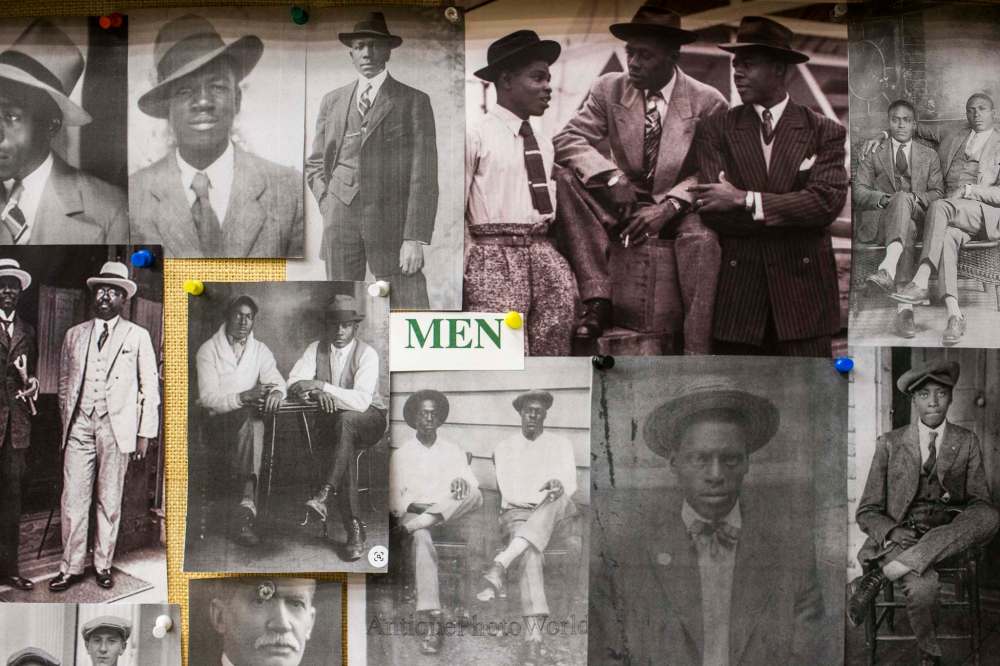
A floor above, the members of the “video village” tuck on their headphones, lean over screens and warn each other not to move, lest the ceilings shake below.
The building quiets, the buzz of activity slows to a hum, then stops. Dozens of dedicated crew members — many of whom are Winnipeggers born and raised — wait calmly for a long night of thrills to begin, to sink themselves into life in Canada’s postwar Black community, a life defined and lived by the constant huff of the cross-country trains.
The clapperboard snaps shut. Action.
● ● ●

Back in the maze-like halls of The Porter’s production office, the show’s co-creator/writer/producer Arnold Pinnock is alight.
As he floats through the departments sprawled throughout the expansive Inkster Industrial Park work hub, he stops to greet each unfamiliar face, asking for their name, their background, what they know of the show. He spends a few minutes with each person — from dancers to background actors to crew members — thanking them for joining the project and probing them on their connection to the history embedded in the show’s material.
“It’s one thing to be able to research and study and read about history,” says Pinnock, 53. “It’s another thing to feel it and be empowered by it.”
Though The Porter is largely set in the railyards and Black communities of Montreal, Chicago and Detroit, its story has strong connections to Winnipeg. It was here — in a Main Street pool room — that the country’s first Black union, the Order of Sleeping Car Porters, was formed to fight for the rights of porters, whose work catering to passengers was precarious and poorly paid. Here, the early Black community of Western Canada laid down roots, working and organizing along the railway lines, and establishing itself in churches and neighbourhoods a stone’s throw from the train stations.
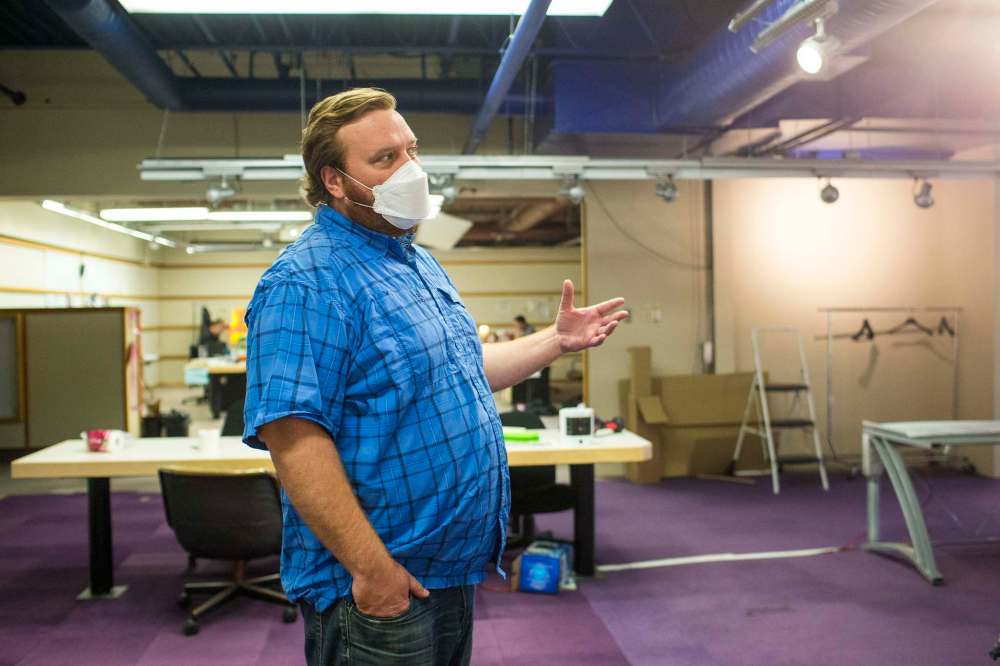
Pinnock — also a busy actor who has appeared in everything from Altered Carbon to The Baroness Von Sketch Show— explains it was part serendipity, part deliberation that landed the crew amid Winnipeg’s picturesque historic buildings and neighbourhoods for shooting. Months into the project, he says, the magic is palpable.
“You can literally walk by it,” he says. “If I’m talking about American history, it’s a place that you’ve read about or whatever it may be, but literally you can walk the very footsteps of our forefathers — of Black history — within this very city.”
From the beginning The Porter has been a project belonging to and existing within the community. Since shooting began in June, the show’s trailers could be spotted around West Broadway, in the city’s downtown core, or near The Forks and Union Station.
In April the show issued a local casting call, seeking to recruit background talent from among Winnipeg’s Black community. In the end they hired around 1,800 actors of all ages to fill in the bustling community life (think churchgoers, union members, families and, of course, the porters themselves) connecting them to the history that has been long-woven into the fabric of Winnipeg’s streets.

“I remember the first or second day, Mr. Arnold Pinnock sat us down to give us a conversation about the history and the reason for the production,” says 17-year-old background porter Emmanuel Oderemi of the strides Black train porters made in the human-rights movement in Canada.
“I learned about the work conditions, how it was hard for porters to get by, the struggles they had to go through for us to get to where we are today as Black Canadians in Winnipeg, in Manitoba, in all of Canada as a whole.”
A young renaissance man, Nigerian-born Oderemi is already up and coming as a model, actor, basketball player and — after he finishes Grade 12 this year — an aspiring dermatologist. He heard about the show through his modelling agency, and in his months on set has been tucked under the wings of actors and production crew alike.
“I didn’t know much about this — it’s not really taught in schools right,” Oderemi says of the history underpinning the show.
“Just to learn about what (our ancestors) went through, and even how things were here in Winnipeg — I was surprised that things like that happen here.”
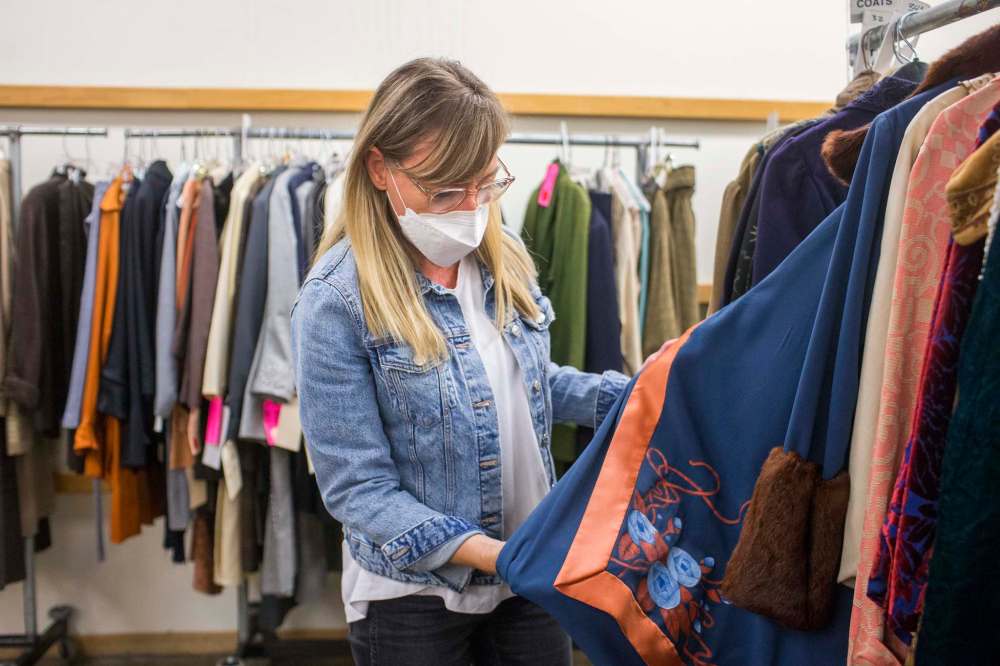
While being fitted for his porter uniform, Oderemi says he felt “empowered” just stepping into the shoes (and threads) of those who paved the way for him to live and succeed in the city.
“I got to play a part of my ancestors, to really see how things were. Just the clothing allowed me to reflect… it’s just powerful. The uniform represents what they had to do and since we all wore the same uniform — we’re in it together, you know?”
One of Oderemi’s fellow background porters, nearly 70-year-old Robert Hobson, recalls a similar sense of power and pride as he first donned the black-leather shoes and crisp grey jacket of the custom-made porter uniform.
“When I tried it on, I felt very special. I felt like, oh gosh, I’m really part of something big to have a uniform made for me,” Hobson recalls, remembering in particular the feeling of having his shoes shined and tie straightened by the crew.
“Being on set and wearing it, you walk with such pride. It was a proud moment when I put it on for the first time.”
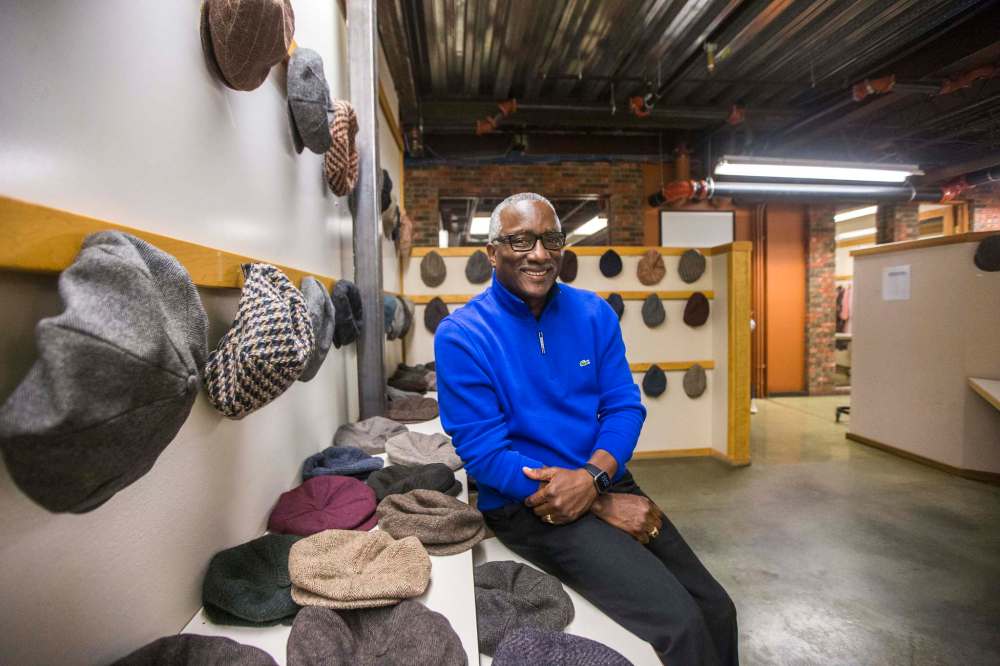
Hobson immigrated to Winnipeg from St. Kitts in the 1970s, joining a wave of Caribbean immigration into Canada around the time. He had little knowledge of the porters’ struggle before joining the show, he says, but after living near the CP railways for many decades, the show gave him a greater respect for contributions the rail company — and the Black community — made to the city. As he immersed himself in the role, he says, he found himself suffused with a particular sense of gratification.
“Winnipeg is well represented in all the hard work from the wardrobe people to the people that supply the food. Most of the porters are from Winnipeg, the production team is from Winnipeg, the casting team is from Winnipeg,” he says.
“I hope that (Winnipeggers) will take away that this is something grand and have a sense of pride in being part of something historic.”
● ● ●
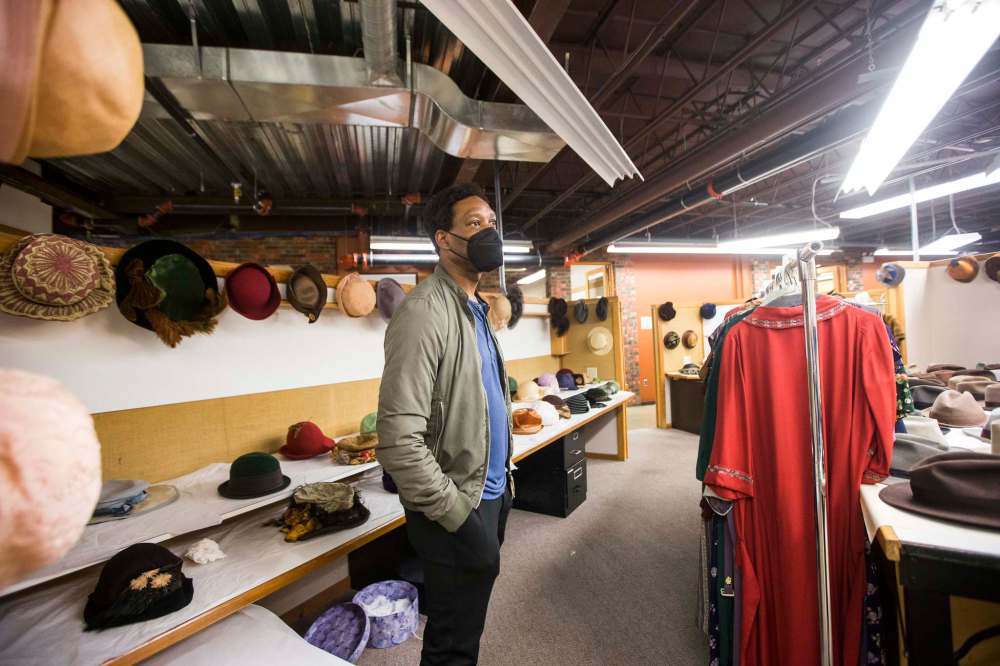
Winnipeggers are, to Pinnock, “the heroes of the show.” Many of the team members and department heads he introduces around the production office are local talent, excited to be part of telling a historic story.
“There is a sense of pride that people are taking on themselves,” Pinnock says. “This show is very humbling to me and everyone working on it. The more we engross ourselves in the show, the more we realize there’s a bigger entity of people outside that want to learn more about the porters, that want to share their stories.”
In the each of the show’s departments, a team is hard at work ensuring no detail is left behind. Renderings of studio sets line the walls, inspiration boards help guide the colours, textures, costumes and decor of each set. The location scouting team, lead by manager Steve Watson, read scripts, knock on doors and get to know neighbours as they prepare to film.
In the art department, explains art director Jonathan Van Winkle, the decisions are constant. Transforming an alleyway in the Exchange District or an apartment block in West Broadway into the streets of 1920s Montreal is a non-stop creative task.
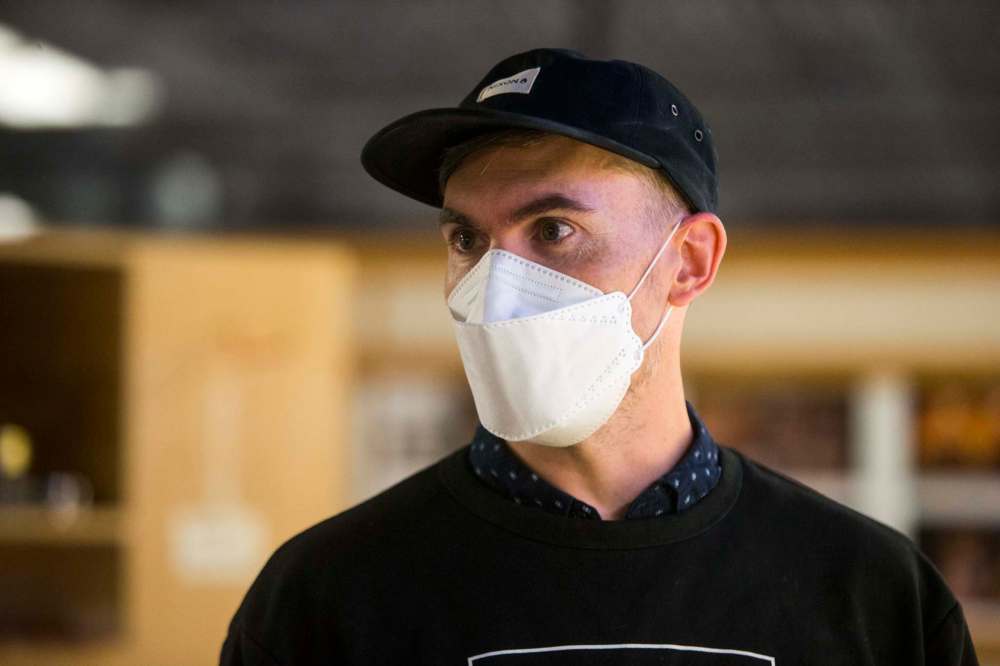
In another room Siyee Man-VanDyck, props buyer, pores over historic catalogues and advertisements to ensure everything on screen is era-appropriate and historically accurate — down to the dimensions of the matchboxes.
In a props room, he points out bikes (sourced from friends or local used bike shops), piles of old luggage (painstakingly restored months before shooting began), garden tools, intricately carved African busts, old gas cans and watering cans, irons and ladders, and trinkets found at antique stores, flea markets and more.
The props department is also responsible for food, Man-VanDyck says. As the COVID-19 pandemic strained Winnipeg’s restaurant industry over the past year, The Porter ordered catering from a handful of Jamaican restaurants, helping support the industry through one of its most challenging years.
“A lot of local businesses that have been struggling benefitted from our business,” he says. “Antique stores that haven’t been able to open, restaurants that didn’t have in-house dining.”
● ● ●
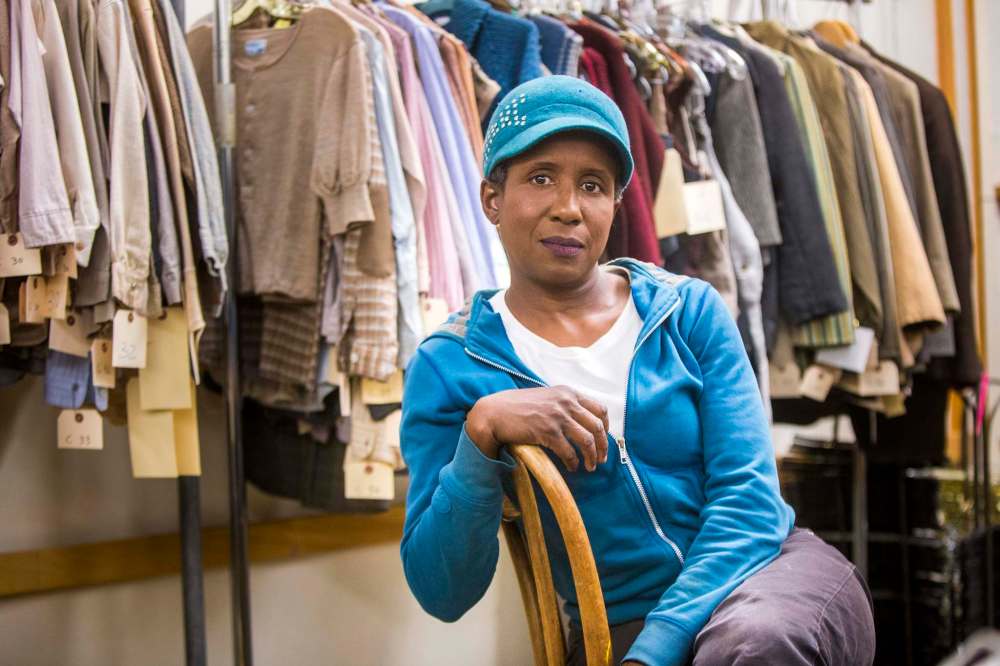
The relationship between The Porter and Winnipeg is reciprocal. As cast and crew draw on the city’s rich talent and unique locations to bring their story to life, they hope the show’s story will offer new conversations, excitement and education back to the community.
“A lot of Canadian history you have to seek out yourself, you have to go digging around and even then, you don’t know how thorough the information is. It’s always interesting to find this new stuff, these new discoveries,” says Lorraine James, a local actor who starred in The New Canadian Curling Club on Royal Manitoba Theatre Centre’s mainstage, who plays a background townsperson and choir member in the show.
James, who’s in her 50s, was born and raised primarily in Winnipeg. She had heard about the porters once, in passing, before auditioning for the show, but had never dug into their stories.
“I’m beginning to realize there’s a lot more that’s been suppressed, and it’s bubbling up a lot more. The more you try to suppress it, the more it will kick back. Who knows how many more surprises there are from history, things that we don’t even expect,” she says.
James counts herself hopeful. She believes the show, its legion of Black faces from crew to cast, and its story of struggle, community and contribution, will inspire some viewers to dig more into the legacy of Black Winnipeggers, and Black Canadians as a whole.
“I’m almost scared to be too hopeful, but at the same time I’m glad it’s here now. I’m glad to be a part of it,” she says, noting her hope is balanced with a healthy dash of skepticism that some will reject what they see onscreen.
“I’m trying to imagine the outcome and I’m thinking: this is going to be beautiful. It’s going to be rich, and it’s going to be very nuanced and if there are some people who can’t or won’t watch it — it’s their loss.”

For those who do choose to immerse themselves in the history when it eventually plays out onscreen, Pinnock imagines the impact of the show will be felt long after the television clicks off.
“After 10 o’clock it’s like: ‘Did that really happen?’” he says with a laugh, imagining viewers unpacking the stories among themselves and their communities.
As the production enters its last weeks of filming on Winnipeg streets, Pinnock holds fast to his vision of The Porter as a living, breathing work of TV art entrenched in history, reciprocity, community and pride.
“This show has become such a powerful entity in my mind,” he says with a soft air of humility. “It’s taken on a life of its own.”
julia-simone.rutgers@freepress.mb.ca
Twitter: @jsrutgers

Julia-Simone Rutgers is a climate reporter with a focus on environmental issues in Manitoba. Her position is part of a three-year partnership between the Winnipeg Free Press and The Narwhal, funded by the Winnipeg Foundation.
Our newsroom depends on a growing audience of readers to power our journalism. If you are not a paid reader, please consider becoming a subscriber.
Our newsroom depends on its audience of readers to power our journalism. Thank you for your support.
History
Updated on Thursday, September 2, 2021 12:43 PM CDT: Updated to correct that the film is not based on Cecil Foster's book.





